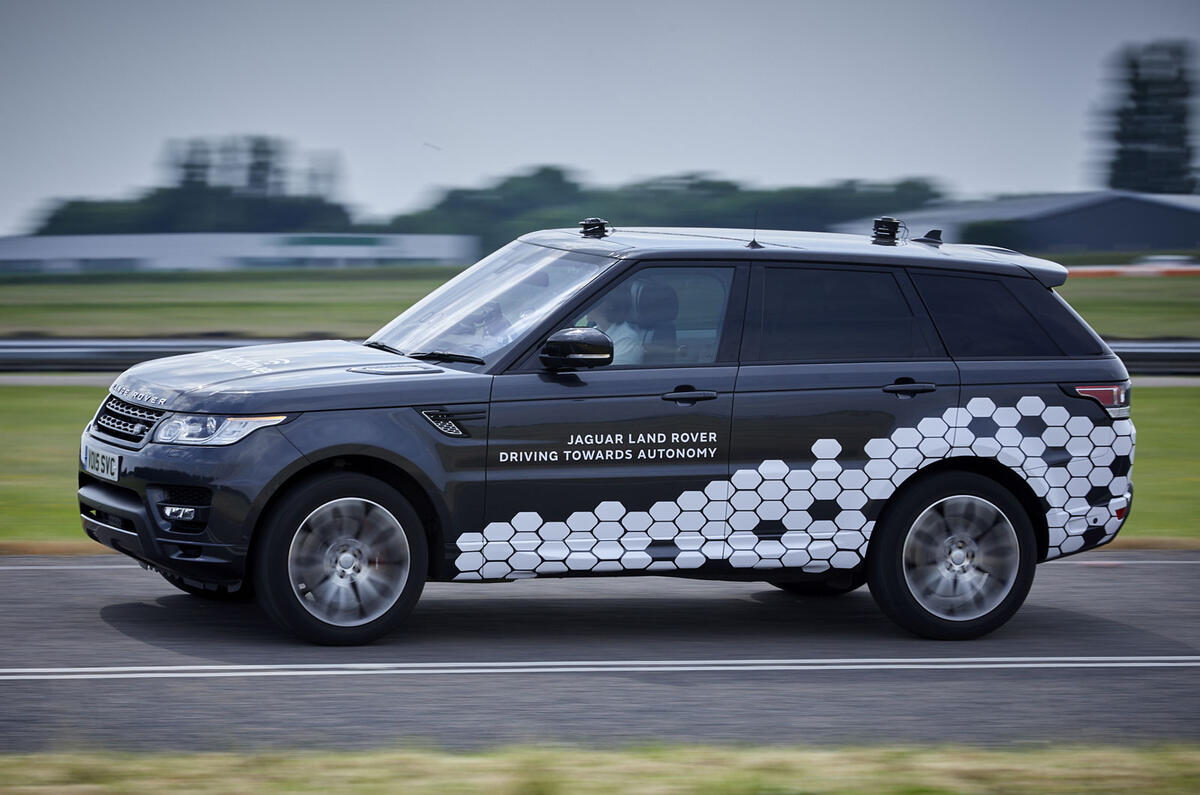Jaguar Land Rover (JLR) is demonstrating for the first time its portfolio of urban self-driving technologies in a Range Rover Sport, at the Horiba test centre in Nuneaton today.
Technology from Ford and Tata Motors will also be on display ahead of trials in October on public roads in Coventry and Milton Keynes. These tests will rely on GPS technology to keep the cars on the right path.
“We have three routes in each city out for approval and are waiting for a decision,” says Mark Cund, JLR’s autonomous vehicle control manager.
The Range Rover Sport is equipped with self-driving technology up to Level 4, which means capable of driving itself, but requiring a human supervisor behind the wheel. It's controlled by algorithms programmed in the graphical language Simulink and converted to C to be compatible with the car’s electrical system. The programming is the work of PhD engineer Amy Rimmer, winner of this year's Autocar's Great British Women awards.
JLR’s premium SUV is said to be capable of negotiating roundabouts and junctions, while also responding to traffic lights as it drives around a simulated urban road network.
The ultimate in self-driving is Level 5, in which the vehicle can drive itself.
JLR has already demonstrated Level 2 and 3 self-driving technology in which a car can make pulling-out manoeuvres on the motorway.
Queen's speech: Government establishes autonomous and electric vehicle bill
Other autonomous and connected car vehicle technology to be seen in operation at Horiba are Emergency Vehicle Warning (EVW), Intersection Collision Warning (ICW) and In-Vehicle Signage (IVS).
Some of these technologies require roadside technology boxes to beam real-time driving information as part of a flow of car-to-car information.
A Midlands Fire Brigade truck has been fitted with the EVW, which can warn a motorist where and from what direction an emergency vehicle is approaching to allow the driver to pull over to ease the fire engine's passage through traffic.
Jaguar I-Pace: first drive of electric SUV concept
ICS warns a driver if it is not safe to go through a junction.
IVS could be a significant breakthrough if it can replace in-car camera systems to relay road sign info to the driver. Too often cameras get confused by erratic signage, but IVS use more reliable roadside data transmission to ensure the information is correct.
Behind the project to bring self-driving cars to British roads is UK Autodrive, a public-private consortium, co-ordinated by the Centre for Connected and Autonomous Vehicles and Innovate UK.




Add your comment